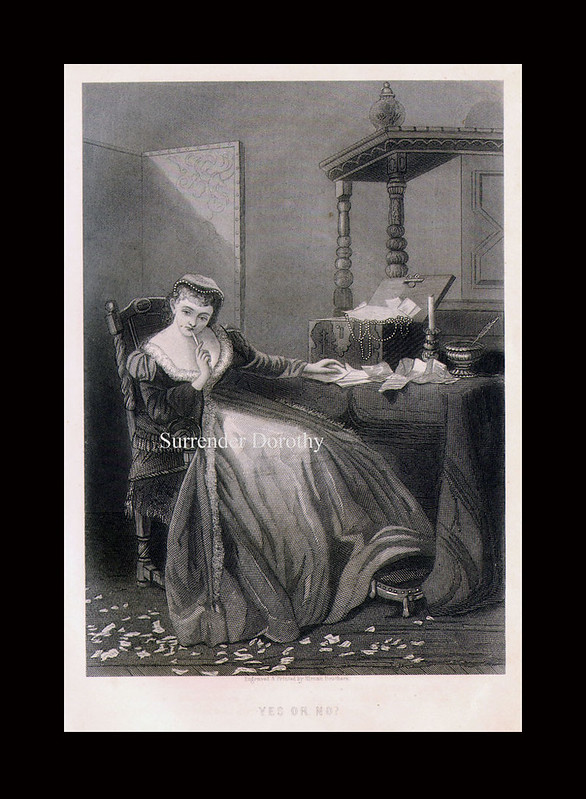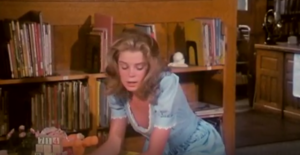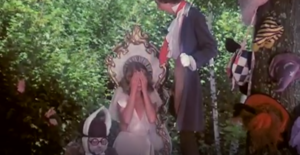Moreau’s “The Apparition” depicts Salome demanding John the Baptist’s head. As the biblical story goes, Herod had imprisoned John the Baptist for claiming that his marriage to Herodias, wife of his late brother, was invalid. However, Herod was unwilling to kill the prophet due to his popularity. However, when his stepdaughter, Salome danced at a feast, Herod promised her whatever she wanted, and Salome demanded the head of John the Baptist on a platter. Moreau’s painting depicts Salome as the ultimate temptress. In the Victorian eye, her assuredness in her power, shown by her stance, and her vanity and evil sexuality, shown through her opulent but revealing clothes secure her image as the clear villain of the story.
Similarly Bertha in The Lifted Veil fills the role of evil seductress. Latimer maintains that she “intoxicated me” seducing him with her “playful tyranny” (29). He blames her for his choice to continually pursue her. Like Salome, Bertha is characterized as vain and shallow through her “White ball-dress, with the green jewels” (34) and her “rich peignoir” (40) and her other efforts to remain fashionable. Despite his knowledge of Bertha’s character, Latimer still marries her and is shocked by her hatred. He is the architect of this failure, in spite of his gift of foresight, and still blames Bertha rather than his own actions.
The villainy of these women is effectively a twisted version of Victorian ideals placed on women. Victorian women were meant to be beautiful, fashionable, and above all—appealing to men. However, they were not supposed to have agency: effectively they were dolls or decoration, if they were beautiful, it was to be observed and enjoyed by others, their fashionable clothes were simply an expectation, not desired by the wearer. Any form of intention to beauty, fashion, or the use of these as tools was inherently bad. To intentionally dress in opulence or fashionable trends was to be shallow. If you were aware of your beauty, you were vain and self-absorbed. If your beauty or sexuality led to a man’s downfall, then you were an evil siren. The idealized attributes of women were never their own possession, and to claim them and use them was to take on the role of temptress.











